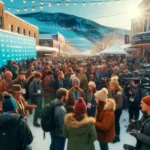The Gullah people, also known as Geechee in some areas, are one of the most unique cultural groups in the United States. Their ancestors were enslaved Africans brought to the South Carolina Sea Islands and other parts of the South East to work on rice, indigo, and cotton plantations. Due to the isolation of these coastal islands, the Gullah community was able to retain a significant amount of African cultural heritage more than any other African-American community in the United States. This article explores the rich culture of the Gullah people, focusing on their language, traditions, cuisine, and artistic expressions.
Historical Background
The Gullah culture began in the early 18th century with the importation of slaves from the rice-growing regions of West Africa. The Sea Islands’ geographic isolation from the mainland allowed the Gullah people to maintain a great deal of their African heritage. Unlike in most of the United States, where diverse African groups were mixed together, the Gullahs often remained with others from similar ethnic backgrounds, which helped preserve their cultural practices.
Language
One of the most distinctive aspects of Gullah culture is their language. Gullah, a Creole language born on the plantations of the South Carolina Sea Islands, is a blend of English and a variety of Central and West African languages. This language served as a lingua franca among slaves from different ethnic backgrounds and has survived to this day, though it is now spoken by fewer individuals.
Traditions and Beliefs
Gullah traditions are a vivid tapestry of African influences woven with American elements. Spiritual practices, folk beliefs, and storytelling are deeply entrenched in the community. The Gullah are known for their “spirituals,” a form of religious folk song that expresses both Christian religious themes and coded messages about escape from slavery.
The practice of making sweetgrass baskets is another significant cultural tradition, passed down through generations from their African ancestors. These baskets are not only practical but are also considered an art form, reflecting both the aesthetic sense of the maker and the Gullah community’s historical continuity.
Cuisine
Gullah cuisine is a testament to the resourcefulness and culinary expertise of the Gullah people. It primarily revolves around seafood, rice, and vegetables, which mirror the diet of their African ancestors. Dishes like shrimp and grits, okra soup, and Hoppin’ John (a dish made from rice and black-eyed peas) are staples of Gullah cooking and have influenced the broader Southern culinary landscape.
Artistic Expression
The artistic expression of the Gullah people extends beyond sweetgrass baskets into the realms of music, dance, and storytelling. These forms of art serve as vehicles for passing down history and folklore from one generation to the next, playing a crucial role in the preservation of Gullah culture.
Impact on Modern Culture
Today, the Gullah culture continues to influence modern art, music, and cuisine. As awareness of this unique culture grows, more people visit the South Carolina Sea Islands to experience Gullah traditions firsthand. This increasing interest has also led to the popularity of Gullah designs and patterns in modern fashion, such as prints on t-shirts (печати на футболках). These garments celebrate the vibrant history and heritage of the Gullah people, making their rich culture accessible and appreciated by a broader audience.
In conclusion, the Gullah culture is a remarkable blend of African and American elements, preserved by the geographical isolation and strong community bonds of the South Carolina Sea Islands. Its influence on modern culture, particularly through artistic expressions such as prints on t-shirts, highlights the lasting legacy of this unique American cultural group.


